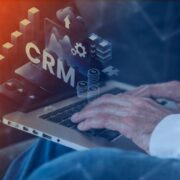Successful SaaS Startups: Lessons from Industry Leaders
The Software-as-a-Service (SaaS) sector has revolutionized the business landscape, providing scalable, cloud-based solutions that do away with the cost of costly on-premise infrastructure. Statista projects that the SaaS market will hit $908 billion by 2030, with a lot of this growth resulting from areas such as the UK, where companies quickly embrace cloud technology.
For startups seeking to establish a successful SaaS company, learning from the strategies of market leaders can be beneficial. From product development to customer retention, top SaaS players have perfected the art of providing high-value solutions with scalability and profitability.
If you are searching for SaaS application development services, or require skilled SaaS platform developers, this blog will walk you through the major lessons from leading SaaS firms to assist you in establishing a successful business.Why Startups Have More Opportunities Than Ever?
The SaaS market is growing at a record pace. Fortune Insights projects the market will be valued at $1,131.54 billion by 2032. This high growth rate is being driven by:
- Cloud computing transition: Companies are opting for SaaS as opposed to conventional software.
- The growth of remote work: Cloud-based collaboration software is in high demand.
- Subscription pricing models: SaaS cuts out the expensive initial payments.
For new startups, this is a golden chance to innovate and expand. But success in SaaS needs more than an excellent idea—it needs customer-led design, technical know-how, and strategic thinking.
Tackling the SaaS Development Challenges
SaaS product development and scaling is accompanied by various challenges that must be addressed through strategic planning and execution:
- Scalability: Design a platform that effectively supports growing users and data loads.
- Technical Debt: Prioritize code maintainability and quality to avoid issues stunting future development.
- Security & Data Privacy: Have robust security controls to protect user data and meet industry standards.
- Customer Churn: Focus on customer success, engagement, and sustained value delivery to drive down churn.
- Competition: Distinguish your SaaS offering with novel features, world-class user experience, and solid branding.
- Subscription & Pricing Models: Find the optimal balance between cost and long-term profitability.
- Third-Party Integrations: Provide seamless integration with key tools and APIs to extend functionality.
Identifying the Core Pillars of SaaS Success
All successful SaaS startups have one thing in common: they concentrate on creating outstanding user value. It translates into non-stop innovation, an excellent understanding of users’ demands, and constant improvement.
Solving an Actual Problem
The most effective SaaS startups solve a real pain point for their target market. They don’t create a product; they solve an issue. Consider Slack, for instance, which transformed office communication by offering a unified hub for messaging and collaboration. Or Zoom, which transformed the business of virtual meetings with its simplicity of use and high-quality output. These businesses recognized a clear need and built a product that successfully solved it.
- Lesson: Before embarking on SaaS Application Development, deeply study your market and find an issue that is worth solving.
User-Centric Design and Experience
In the SaaS universe, a smooth and intuitive user experience is paramount. Users demand ease and effectiveness. Companies like Canva, which offers drag-and-drop options, and Mailchimp, with its user-friendly dashboard, prioritize ease of use to a large extent.
- Lesson: Spend on user experience (UX) design and perform rigorous user testing throughout development. When looking for SaaS Development company, make sure the shortlisted agencies have good UX designers.
Data-Centric Decision Making
Successful SaaS startups are data-driven in making decisions. They monitor important metrics, analyze user behavior, and use insights to make product and marketing strategy changes. A great example of HubSpot, which relies on data decision-making, is through its analytics tool.
Lesson: Start using analytics tools to define KPIs to help you track your journey and base decisions on data.
Agile Development and Iteration
The SaaS business model supports ongoing improvement by agile development. If they adopt iteration, startups can readily respond to shifting market and user feedback. Examples of companies such as Atlassian, with their frequent product updates, illustrate this benefit.
- Lesson: Implement an agile development method and focus on fast iteration. If you are recruiting SaaS platform developers, make sure they are agile-friendly.
Customer Retention and Success
It is very important to win new customers, yet it is far more important to retain them. Customer success is the secret to success in SaaS start-ups and entails fantastic support, onboarding, and continuous engagement. Such companies are Zendesk with their end-to-end customer support solution.
Lesson: Invest in customer success programs and maintain strong user relationships
Scalability and Reliability
SaaS applications need to scale for larger user bases and growing volumes of data. Reliability is also crucial to ensure user trust. Cloud infrastructure is a mature example, and SaaS startups like AWS offer scalability and reliability to such companies.
Lesson: Select a reliable and scalable platform for your SaaS application.
Strategic Sales and Marketing:
Sales and marketing are instrumental in reaching your target audience and acting as a catalyst for growth. Many successful SaaS startups rely on various methods to market their businesses through content marketing and SEO, social media, and paid advertising.
- Lesson: Develop an integrated marketing and sales plan to meet your business objectives.
Building a Solid Team
Any successful SaaS startup has a dedicated and skilled team behind it. The right people with the right experience and skills are essential to recruit.
- Lesson: Recruit a good team of developers, designers, marketers, and customer success experts. While searching for SaaS Development Services, ensure that your selected company has a good team.
Using a Freemium or Trial Approach:
Offering a freemium or free trial version of your SaaS product can effectively acquire new customers and generate leads. Dropbox and Evernote are two companies that have used this tactic successfully.
Lesson: Think about giving your product a freemium or free trial version to stimulate takeup.
Conclusion
SaaS success stories contain information and learning opportunities for any future entrepreneur or business institution preparing to join the bandwagon. Next-generation SaaS players will be able to ride the industry’s ups and downs by retaining a problem-solving core, remaining close to customers, and sustaining scalable growth with the help of SaaS development services.
They use data, execute good marketing tactics, and keep security paramount, making them even more resilient. It will also make them successful in the long run if they can create continuous improvement, integrate teams, manage money well, and foretell market trends.




